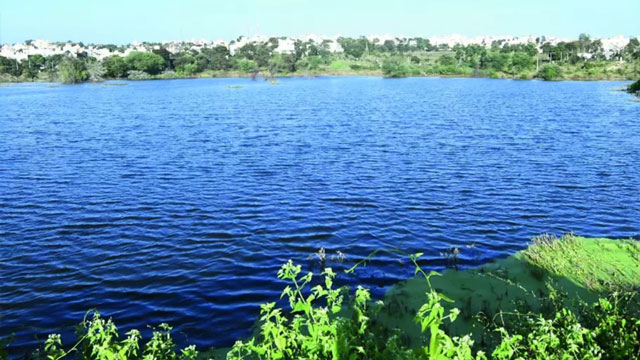Daijiworld Media Network – Bengaluru
Bengaluru, Aug 3: In a pioneering initiative, the Karnataka Tank Conservation and Development Authority (KTCDA) has proposed a scientific overhaul of buffer zone regulations based on the size of waterbodies—making Karnataka the first state in the country to adopt such a tailored approach.
In an official press release, the KTCDA stated: “For the first time in the country, a proposal has been made to scientifically modify buffer zone regulations based on the size of waterbodies/tanks in the state.”

Representational image
The proposal comes in response to appeals from elected representatives, including the MLA from Kundapura and the Deputy Commissioner of Udupi, who argued that the existing uniform 30-metre buffer zone rule was being unfairly and disproportionately applied to both small and large waterbodies.
As per KTCDA’s graded recommendation, the proposed buffer zones are as follows:
-
Zero metres for waterbodies up to 5 guntas
-
Three metres for those between 5 guntas and 1 acre
-
Six metres for waterbodies measuring above 1 acre up to 10 acres
-
Twelve metres for lakes between 10 and 25 acres
-
Twenty-four metres for lakes from 25 to 100 acres
-
Thirty metres for lakes above 100 acres
“This buffer distance has been framed using a scientific approach,” said the release, noting that buffer zones play a critical role in allowing natural rainwater inflow into lakes. “Smaller tanks will have smaller buffers, while larger tanks will have larger buffers.”
The proposal also addresses the regulation of nala (drain) buffers, replacing the existing unscientific norms of 30, 15, and 10 metres for primary, secondary and tertiary nalas respectively. The revised norms suggest:
-
15 metres for primary nalas
-
10 metres for secondary nalas
-
5 metres for tertiary nalas
The KTCDA clarified that the revised rules would permit only public utility structures within buffer zones—such as sewage treatment plants, pipelines, and roads—and would not allow real estate developments. “This modification is not intended for real estate development; it aims solely to bring uniformity in buffer zones for different tank sizes,” the Authority stated.
Officials added that the revised framework was developed after studying buffer zone policies in other states, including Gujarat, Telangana, and Tamil Nadu. Karnataka remains the only state to propose incremental buffer zones scientifically correlated with tank sizes.
The KTCDA emphasised that the proposed changes would not increase flood risks but, in fact, would help mitigate urban flooding while supporting essential civic infrastructure.
Further steps on the proposal will depend on government review and public feedback before formal implementation.